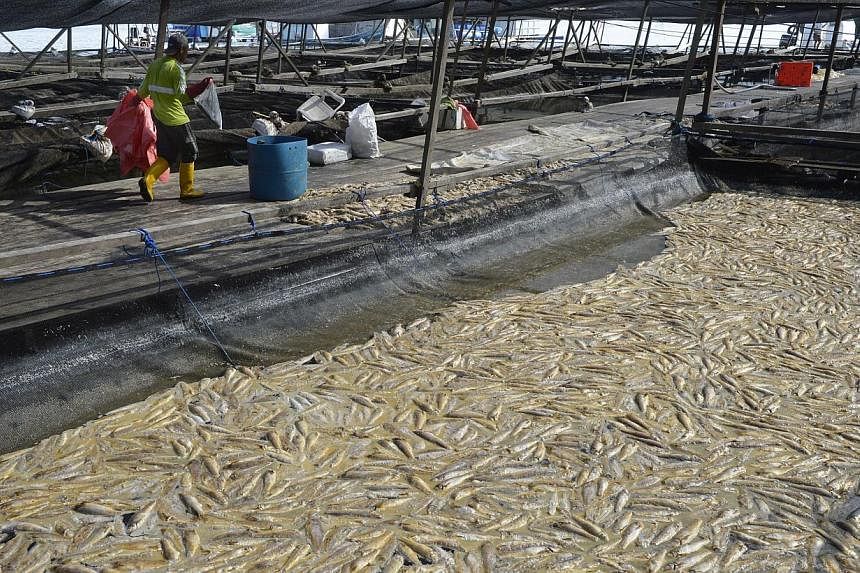After a plankton bloom at the weekend wiped out almost all their stocks of fish, some farmers in Changi are looking at moving to sites with stronger tide conditions.
Others told The Straits Times they planned to invest in more costly closed containment systems that would be protected from such blooms, which can suffocate marine life. The systems cost a few hundred to tens of thousands of dollars.
The weekend incident was a blow to farms still trying to recover from a similarly devastating bloom a year ago. One of them, Ah Hua Kelong, went online to appeal for donations to help it meet its daily running costs.
Mr Frank Tan, chief operating officer of Marine Life Aquaculture, which produces about 200 tonnes of seabass and threadfin annually, said he had planned to move to two sites - one on Pulau Tekong and the other on the Southern Islands - following last year's incident, which wiped out 20 tonnes of his fish.
Last Saturday's bloom killed 120 tonnes of his fish.
"We spent the past year rebuilding our business and were planning to move only in about a few years' time. We didn't expect another plankton bloom so soon," said Mr Tan, 40. He said he had spent almost a million dollars rebuilding his business.
Yesterday, he was still busy directing staff to bag and remove the dead fish.
Following the authorities' warnings, he had managed to save a few hundred adult fish by moving them to an offshore site located near his Changi farm.
Mr Tan said he will be ready to move in one to two months. He estimates the tides at Pulau Tekong to have a water flow rate three times stronger than those at Changi, so stronger support structures need to be built for the farm.
Fin Fisher owner Timothy Hromatka, 42, is not discounting a move to Pulau Tekong, but estimates he would need $500,000 to do so. "Tekong is farther away (from the mainland), and this means higher operational costs."
The smell of rotting fish was strong around the fish farms, located near the Lorong Halus jetty, yesterday as workers continued to dispose of the dead fish.
As of October last year, home-grown farms contributed about 7 per cent to the industry, producing fish like sea bass and grouper as well as lobsters.
Plankton blooms are caused by factors such as warmer weather and a neap tide, when the high tide is at its lowest.
Some farmers such as Mr Malcolm Ong, chief executive of The Fish Farmer, who is in his 50s, are looking at farming under controlled conditions to protect their stocks from such unpredictable blooms.
But another farmer, Mr Simon Oh, in his 60s, said the systems can be challenging to install. He lost all 35 tonnes of his pomfret last week. "I have no funds to restart my business, much less invest in such equipment," he said.

Additional reporting by Isaac Neo


